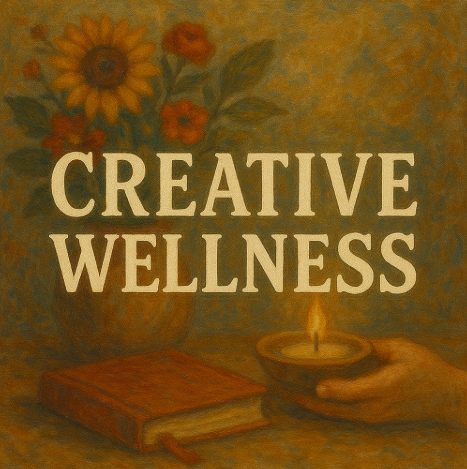Table of Contents
- Introduction
- Early Signs of Creative Burnout
- Common Causes of Burnout
- Practical Remedies and Prevention
- Conclusion
Introduction
Creative work is often described as joyful, expressive, and deeply fulfilling. Yet, behind the canvas, the camera, or the keyboard, many artists experience an invisible weight—burnout.
Unlike simple tiredness, burnout is a state of emotional, mental, and physical exhaustion that can drain inspiration and diminish confidence.
I have felt this myself. My last commission completed, I found I had no artistic need or drive at all, and for many months I have not picked up a brush. Instead, I turned to writing, which felt lighter and more natural at the time.
This shift reminded me that burnout does not always mean the end of creativity—it may simply redirect it, urging us to pause, rest, or explore other forms of expression until the spark returns.
Recognising the early signs and taking action is essential for sustaining a long and healthy creative practice.
Early Signs of Creative Burnout
Burnout rarely arrives suddenly; it tends to creep in gradually. Here are some of the earliest indicators:
- Loss of enjoyment: Work that once felt exciting begins to feel like a chore.
- Creative block: Struggling to find ideas, or feeling paralysed when starting new projects.
- Exhaustion: Persistent tiredness, even after rest, or an overwhelming desire to avoid the studio altogether.
- Detachment: Emotional distance from one’s own work, or feeling disconnected from the meaning behind it.
- Irritability: Small setbacks trigger disproportionate frustration or discouragement.
Common Causes of Burnout
Several factors can contribute to burnout among creatives:
- Overwork: Long hours spent producing without adequate rest.
- Perfectionism: Relentless pursuit of flawlessness, leaving little room for mistakes or play.
- Isolation: Working alone for extended periods, with limited feedback or community connection.
- External pressure: Deadlines, financial stress, or the need to meet an audience’s expectations.
- Lack of boundaries: Allowing work to consume all available time and energy, leaving no balance.
Practical Remedies and Prevention
The good news is that burnout is not permanent. With intentional steps, balance and inspiration can be restored:
- Rest deliberately: Schedule genuine breaks—time away from screens, paints, or cameras. Rest is not laziness; it is recovery.
- Reignite curiosity: Experiment with new mediums, playful projects, or purely personal work without expectations.
- Connect with peers: Share experiences with other creatives; community often restores perspective and encouragement.
- Set boundaries: Define working hours, say “no” when necessary, and protect personal time.
- Care for your body: Regular walks, stretching, or mindful breathing can replenish physical energy.
- Seek inspiration elsewhere: Read, travel, or simply observe nature—sometimes the best ideas come when we step away from work.
Conclusion
Burnout is not a sign of weakness, but a signal that change is needed. For creatives, whose work draws directly from their inner lives, tending to one’s health is inseparable from tending to one’s art.
By recognising the early signs and applying gentle remedies, it is possible not only to recover but also to grow stronger in resilience, creativity, and joy.
History offers many reminders that burnout is part of the creative journey rather than the end of it. Vincent van Gogh, during one of his darker periods, temporarily abandoned painting and turned to writing long, heartfelt letters to his brother Theo. J. M. W. Turner was known to retreat for months at a time, leaving London’s pressures behind to walk the countryside until his vision returned. More recently, writers such as J. K. Rowling have spoken openly about stepping back when exhaustion threatened to silence their imagination. Each demonstrates that even the most celebrated voices sometimes fall quiet—and that rest, retreat, and renewal are integral to the process.
Whether that renewal comes through walking in nature, experimenting in a different medium, or simply giving oneself permission to pause, it is a reminder that creativity thrives on balance. Allowing space for recovery ensures that when the brush, the lens, or the pen is lifted again, it carries not only skill but also fresh life.
